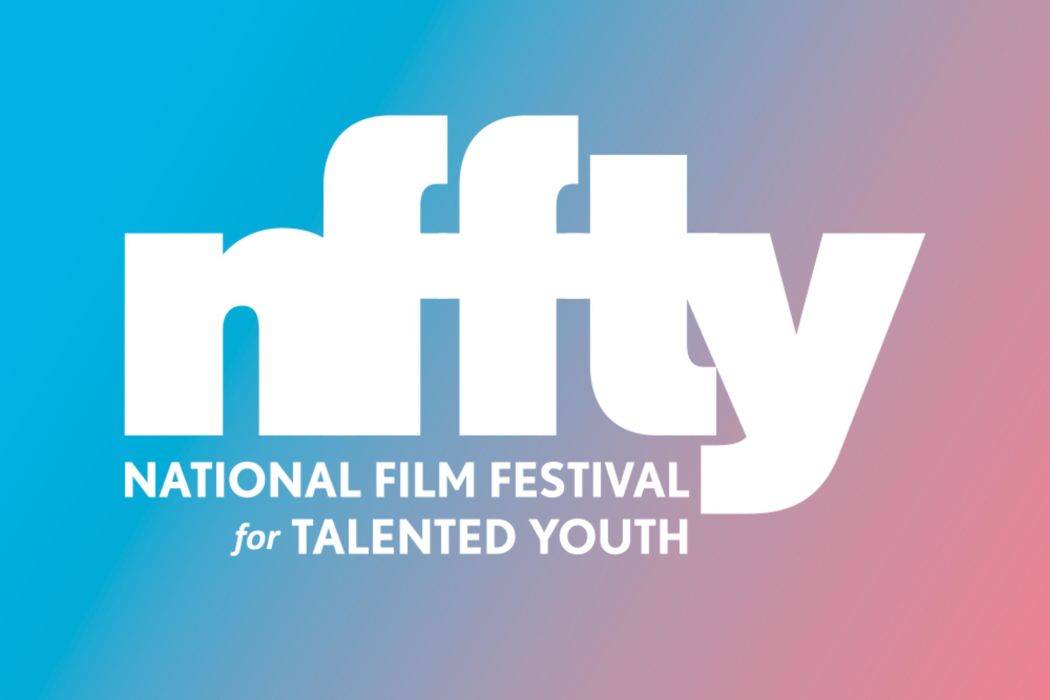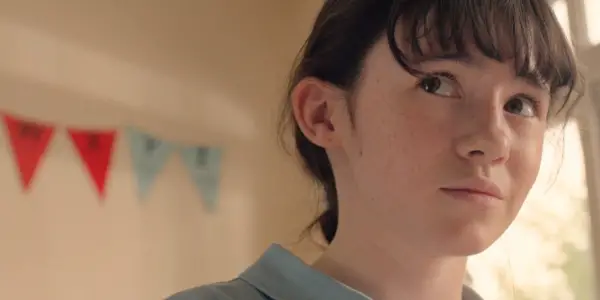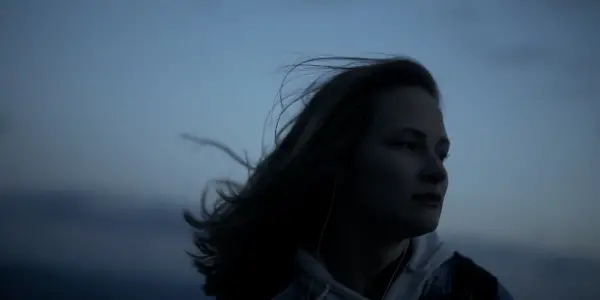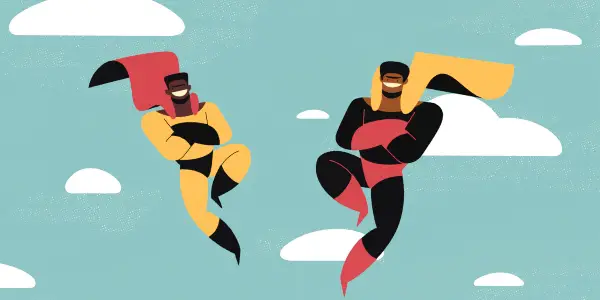The National Film Festival For Talented Youth: Opening Night Gala

Andrew Stover is a film critic/writer from the Chicagoland. His…
The National Film Festival for Talented Youth (NFFTY) is the largest youth film festival in the world. Since 2007, the NFFTY showcases short films by directors 24 and under from around the world, in hopes they will continue their cinematic growth and surface as another pivotal voice in cinema. The 13th annual NFFTY takes place in Seattle, Washington October 24-27. The Opening Night Gala features five short films: My Time, You’re Gonna Be Okay, Tree #3, Sodom & Gomorrah and Grab My Hand: A Letter to My Dad.
My Time (Giulia Gandini, UK, 24)

Every girl expects to get their period at some point, but there’s no way to really know when you’ll get it. For some, they may experience cramps before it happens, but for our 12-year-old lead character, Ava (Clara Read), in Giulia Gandini’s My Time, she’s currently at school, on deck to give a five-minute presentation in front of the whole class. Albeit a student is giving his presentation, Ava is anxiously staring at the clock, focusing on the raucous tick-tocks and the fleeting seconds before she’s summoned by her no-nonsense teacher (Trevor Murphy). She’s clearly tense, but she grows increasingly uncomfortable — unable to situate herself in her chair without sensing something is off, only to discover she just had her first period in class.
It’s a nightmare, essentially laying out the design of a cruel, class-wide humiliation, but Gandini doesn’t end up taking that direction. Beforehand, watching Ava become aware of the situation, and attempt to wiggle out of presenting, is infused with genuine fear. She’s unable to grab a jacket without standing up, and her friend is sleeping in class (not even waking up to a series of text messages Ava is quickly sending to her, asking for help). A POV shot shows the door, but despite being inches away, it’s out of her reach. The clock continues to taunt her, with the perpetual tick-tocks sounding off in the background as she hastily searches for an escape. The clock is amplified, and the feeling of no escape is conveyed through shots that zoom-in on Ava’s dithering face.
In reality, the feeling that she’ll be ridiculed for getting her period is deeply disheartening, chiefly because getting a period is natural and it’s out of a woman’s control — but you always have control over how you react to anything. But ensnared in a confined learning environment, with kids who are not entirely invested in the presentations (you have a student listening to music and another one actually sleeping), something as big as somebody getting their period can gain unwanted attention. Clara Read is front and center, portraying Ava with fearful eyes that gradually widen, and with a face woven with insufferable shame — although she shouldn’t feel shame, and Grandini commendably gives Ava enough confidence to overcome the discomfiture.
As it turns out, the class assignment is “My Fictional Hero”, and looking down at her essay, is a title that reads “Wonder Woman”, who we all know is an immortal Amazon warrior goddess and a figure of female empowerment. So she goes up to present, immensely unflustered and fierce. When the teacher sees the stain, he says “My bad, you can go.” She responds with “I’m good thanks.” Finally, she corrects the assignment written on the board, changing “My Fictional Hero” to “My Fictional Heroine”.
Giulia Gandini is a London-based writer/director, who created an emotionally resonant short film (05:48) following a 12-year-old girl who has her first period during class. Within the five-minute runtime, Gandini deftly exhibits how something perceived as awkward is intrinsic and can evolve into empowerment. If My Time is any indication of Gandini’s future as a filmmaker, she’ll continue to supply an authentic female perspective in film.
You’re Gonna Be Okay (Catherine McCord, Virginia, U.S.A., 19)

There are moments in our lives when we reevaluate our lives. When tragedy strikes, the road to recovery will always be bumpy. Some roads lead to perseverance, while others lead to more dour destinations. After being diagnosed with Endocarditis (a rare heart disease), Catherine McCord had to undergo open-heart surgery. In an attempt to recollect moments of her life, she combines vintage home movies from the past and voicemails in the present to tell her story of recovery.
You’re Gonna Be Okay is a short doc written, directed and edited by Catherine McCord. And this is Catherine’s story. The opening shot follows Catherine walking up a slight hill in slow motion, with a backdrop of dark grey clouds and far-reaching landscapes. There are hints of blue in the sky, but no light breaches through. A close-up of Catherine staring up at the sky is then utilized, only for the camera to sway aimlessly around, as if the blistering wind is causing the unregulated motion. When it cuts to the next scene, Catherine’s in her room, bluntly stating “I haven’t felt like me for a long time. The hardest part was not knowing. Living in a state of uncertainty.” If I were a viewer who went in blind, the set-up is intriguingly solemn, with an extreme close-up of a scar located on her chest as a patent sign of medically-induced tribulation.
With the camera now on a dolly, we pass by a succession of trees until brief information of Catherine’s illness pops up on-screen. From there, Catherine meshes the tranquility of nature, the struggle of healing and the beauty of memories to effectively tell her story. The handheld camerawork can be erratic, but it’s designed that way to replicate Catherine’s oscillating feelings of what she went through — only to find herself in the heart of nature, breathing in the serenity and better understanding the value of life.
The scene transitions are frequently purposeful, with one scene expertly connecting the present to the past: A shot of Catherine’s feet as she walks in the forest quickly shifts to a home video of when she was younger and learned how to walk, until transitioning again to when she had open-heart surgery and struggled to walk. More home videos are used, along with voicemails from friends and family who provided support in these unforeseeable times. The tone is starkly optimistic, with the last shot persuading you of Catherine’s undeniable strength. The last shot once again finds Catherine on top of a hill, looking up at the sky, and finally seeing sunlight rupture through the dreary clouds, signaling a life-affirming essence of hope.
You’re Gonna Be Okay is an intimate tale (07:39) of healing and reflection, with breathtaking imagery of nature seen from Catherine McCord’s viewpoint. She documents her pain and stickability with a graceful, melancholy touch.
Tree #3 (Omer Ben-Shachar, California, U.S.A./Israel, 22)

Tacit racism is what’s preventing little Itai (Lior Malka) from being the leading actor in the school play, which is organized by Ms. Crystal (Kelly Ryan). When we first see Itai, he’s taking a video for his vlog before his audition for the school play (a take on Sleepy Hollow). Through subtly, Itai’s backstory is revealed through casual conversation. He has a vlog precisely for acting. Inheriting strong verve and phlegm (“I’m a little bit nervous, but what real actor isn’t.”), he’s auditioning for the lead role in the school play. And he’s also an Israeli immigrant.
Unfortunately, after Itai gives a spirited audition, Ms. Crystal politely indicates rejection (“You always know how to bring your own brand of different. And we sure do appreciate it”). Ms. Crystal ends up giving Itai the role of Tree #3, a non-verbal part for the second year straight, along with Feng, an Asian girl (Eva Du) and Mateo, a Mexican boy (Alex Gonzalez). Despite showing a keen passion and determination, Ms. Crystal remains adamant in her decision — further sketching the implicit racism and xenophobia Ms. Crystal foolishly embraces.
With guidance from his grandma (a lovely and good-humored Rita Zohar), who books a trip to see Itai’s play, that Itai finds his voice, and develops a plan to simply perform. Although he’s frustrated with Ms. Crystal, he’s never malapert. Lior Malka is endearingly fervent and sweet-natured as Itai, eagerly yearning for the spotlight but not in a fashion that paints him as vain. He just wants to be judged and treated fairly, and he knows Ms. Crystal isn’t being fair (at one point, Itai says, “If you want more American, I can be more American. Really, I’m an actor; I can get rid of any accent”).
Omer Ben-Shachar doesn’t amount to any verbal violence or anger that would usually emerge in a feature regarding the toxicity of racism. His execution is still vigorous in thought, but it’s also approached kindly, without excessive scorn. Tree #3 is less showy and more emotional, with powerful performances from Malka and Zohar. Omer Ben-Shachar ignites a bright light for Itai, or various bright lights, speaking as the play’s audience also engages in Itai’s poised performance against racism, and it’s glaringly gorgeous and crowd-pleasing. In theater, you play a role, but Itai will not play the tractable role in Ms. Crystal’s blinkered perspective of how talent is calculated (a performer’s acting abilities should never be determined by race, ethnicity or sexuality).
Itai confronts racism without physical aggression but through performance and perseverance. In the end, Itai stands tall, performs wholeheartedly, and gains the acceptance of the audience, despite Ms. Crystal’s efforts to silence him. After all, “A tree isn’t just a tree.” There are numerous branches that distinguish us from others, and nobody should be treated unfairly because of their configuration. Tree #3 is an impressive short film (19:52), and I can’t wait to see what Omer Ben-Shachar does next.
Sodom & Gomorrah (Curtis Essel, Ghana/UK, 24)

Sodom & Gomorrah is an eye-opening documentary from Curtis Essel that chronicles the lives of several people living in Jamestown Beach, Ghana. The misfortunes that wash over this soiled and historic settlement are troubling, but there’s hope. Essel’s directing is hypnotic, enriching the perspective of each person interviewed by experimenting with multiple stylistic techniques.
The first person we see is somebody named Zinatu. She’s on the beach, staring at the camera with a cigarette in her hand. She goes on to tell us part of her story. At age 13, she met a man and fled to Nigeria, only to end up with seven kids. The man ended up abandoning her and she returned to Jamestown (leaving her children), and she would find herself in the Ghetto trying to entice well-off men, in exchange for her services. The scene unfolds in black-and-white, illustrating how colorless the world may seem at times. Zinatu’s doleful eyes radiate so much pain and penitence. With the sound of the waves and the sight of the ocean in the background, the quietude keeps one invested in Zinatu and nothing else — that is until a new person is propelled in the spotlight.
The next person is somebody who goes by Scorpion, a guitarist, and leader of the Beach Scorpions Band. This time around, color is restored, and Scorpion’s viewpoint on everything is not restricted to his face. He goes on to describe why the town got the name Sodom & Gomorrah, and that’s because all the girls are prostitutes. Immediately, a compilation of close-up shots of women is triggered. Each woman shown is distinct in age but they’re all emitting a smile, conveying how there’s more to them, but the town hasn’t given them enough opportunities. He then describes the youth as thieves and armed robbers, utterly convinced everyone in Jamestown Beach is embroiled in a baneful, unredeemable cycle. “We are not taking this one to Heaven” is how he concludes his outlook of Jamestown, not exactly planting that seed of optimism quite yet.
The following person is Nii Odo, a young man who got caught up with the wrong crowd. Joining a group of gangsters and participating in a robbery, he ends up being thrown under the bus and viciously beaten by locals. Harsh hints of blue lighting are employed here, only so it can fade away. Originally, blue symbolizes trust, confidence, faith and loyalty, but Nii loses faith in people by how he was mistreated by his “friends”. The close-ups are still compellingly dramatic, with Nii’s vulnerable eyes piercing your soul, making you feel what Nii is feeling. Nii Odo was neglected by his “friends”, losing all shreds of hope that he’ll ever find an honest person.
Soon enough, Asafoatse Nettey Quarshie (a chief in Jamestown, Ghana) provides some input. Asafoatse elaborates on the police corruption, and how there are more than five thousand Ashawo (Prostitute) Ghettos where violence regularly occurs. But Asafoatse has stupendous tenacity to do good. Asafoatse is committed to constructing training centers for the community that involves hairdressing, carpentry, tiling and cabinet making. This helps cultivate a hopeful future, one that still needs to be heedfully monitored.
Curtis Essel’s documentary (09:44) is fittingly somber and delicately stirring. Even in places that are torn, corrupted, corroded and violent, many citizens do want change, but it all comes down to who will put in the work. Although our world is far from perfect, there are those who are willing to assist people and places in need. From the words of Asafoatse, “All these people their needs are my needs. If you talk to them you realize there are pains in them.”
Grab My Hand: A Letter to My Dad (Camrus Johnson, 24, Frazier Smith, New York, U.S.A., 24)

In this animated short film (spanning 05:08), Camrus Johnson and Frazier Smith frame a personal and heart-rending snapshot of a friendship that lasted years. Grab My Hand: A Letter to My Dad is narrated by the son, and it’s a film made for his mourning father. Camrus tells us the story of his father and his best friend, Dewayne, who died. “The most valuable lesson my dad has ever taught me, was actually the most recent one.” From there, Camrus swiftly tells us how his dad and Uncle Dewayne met in middle school (he says there’s “no blood relation, but he’s part of my family”).
The deep-seated and infrangible friendships that stand the test of time are few and far between, most likely circling back to one person you knew since you were younger. A best friend listens to your problems, not only with his ears but with his heart. And you would gladly do the same. A best friend knows who you really are, and you know who your best friend really is as a person (why would you continue to hang out with them if you didn’t?). Camrus Johnson’s animated picture is a vivid and raw recollection of his father’s relationship with his best friend, and how it can be encapsulated in two words: Gate check!
“And every single morning since they were kids, my uncle would call my dad and say “Gate check”. It’s my uncle’s way of making sure my dad is what he calls out the gate, meaning alive or awake.” It’s unrealistic to think we can fully understand the entirety of their friendship (all the highs and lows), but those two words firmly establish how impenetrable their friendship is. Camrus convinces you that no matter how angry they were with each other, or how unwilling they were to communicate with one another, “Gate check” was a mandatory maxim that kept them connected. Through weddings, birthdays and divorces, “Gate check” is a perennial practice they held dear.
During the first 80 seconds, the animation emulates the fabric of a comic book: the dialogue is written within speech balloons, and the characterization of his father and Dewayne is very heroic. But after waking up from a nightmare, Camrus’ dad gets a phone call from Auntie Tanya (voice of Maaliyah Papillion), explaining how Dewayne won’t wake up. The animation rapidly turns darker, and the tone gets more sepulchral. His dad instantly drives from Georgia to North Caroline, so he can be by Dewayne’s side. The doctors believe it to be a stroke, but they’re still not sure what it is. The hospital room in which Dewayne lies lifeless on a bed is painted black and red, with the window providing limited light in a knowingly doomed situation. Dewayne passes away a week later.
“The most valuable lesson my dad has ever taught me, was that every moment counts. Every memory counts.” Camrus demands hope in a woeful scenario, dictates that moments and memories make your relationships with your loved ones stronger, even when they pass away. The last 30 seconds formulate a photo gallery of every obstacle that can come your way when juggling a deep friendship. Camrus sketches the people with blank faces and bald, unadorned character outlines. He refrains from adding persnickety attributes in order to relate to everyone.
Camrus Johnson pushes the audience to reminisce about the best times they had with their deceased loved ones, and of course, reassure the audience to create as many memories as they can with their loved ones who are still around. Grab My Hand: A Letter to My Dad is deeply personal, yet wonderfully universal as well. It’s an unparalleled gift for one’s father, but also a candid reminder to humanity.
Have you seen any of these short films? Do you plan on attending the NFFTY? Let us know in the comments!
The NFFTY continues October 25, 26 & 27, with dozens more short films from young filmmakers around the world. Get your passes & tickets now.
Does content like this matter to you?
Become a Member and support film journalism. Unlock access to all of Film Inquiry`s great articles. Join a community of like-minded readers who are passionate about cinema - get access to our private members Network, give back to independent filmmakers, and more.
Andrew Stover is a film critic/writer from the Chicagoland. His film & TV reviews can be found on Film Inquiry & Film Threat.













